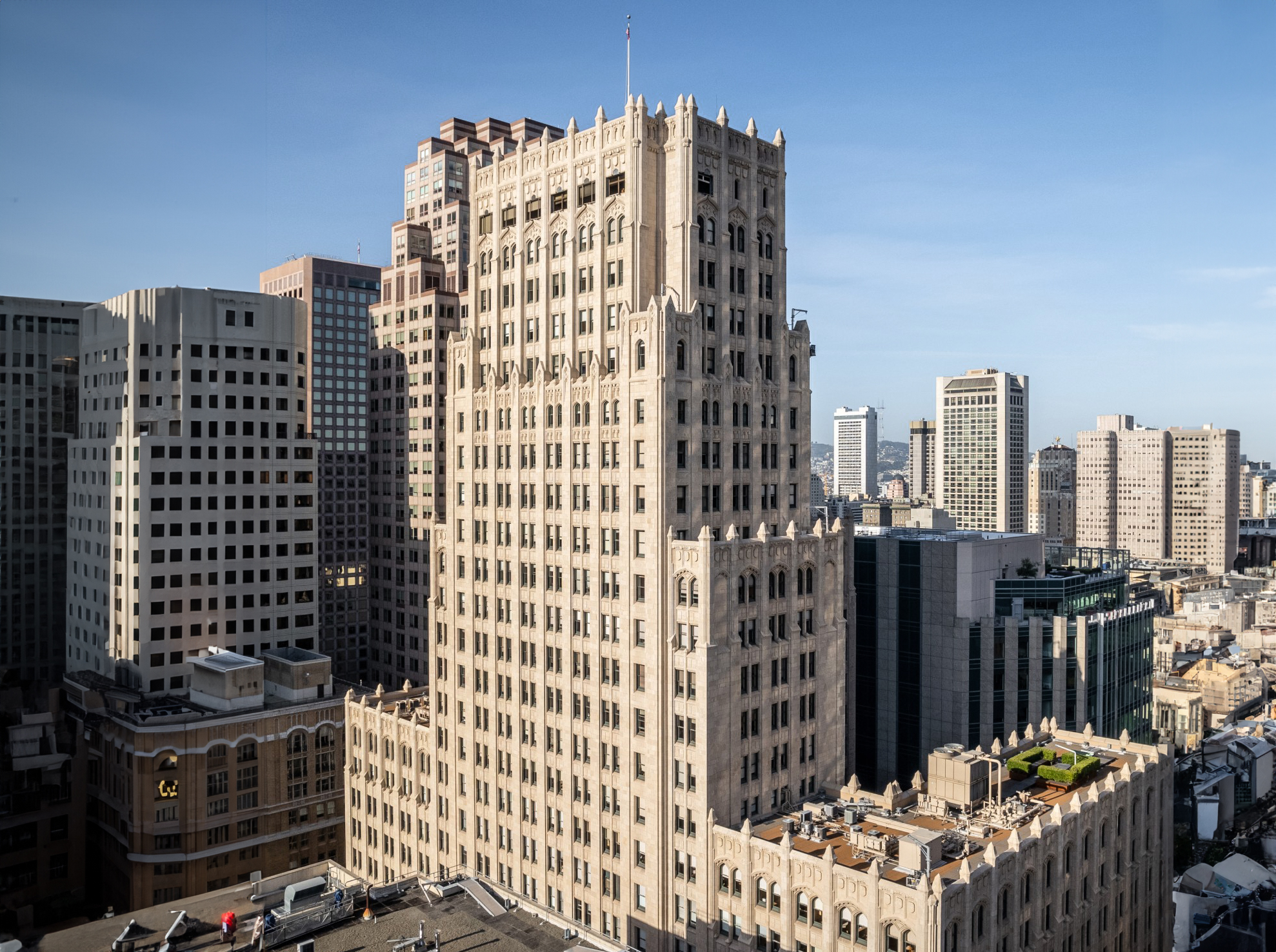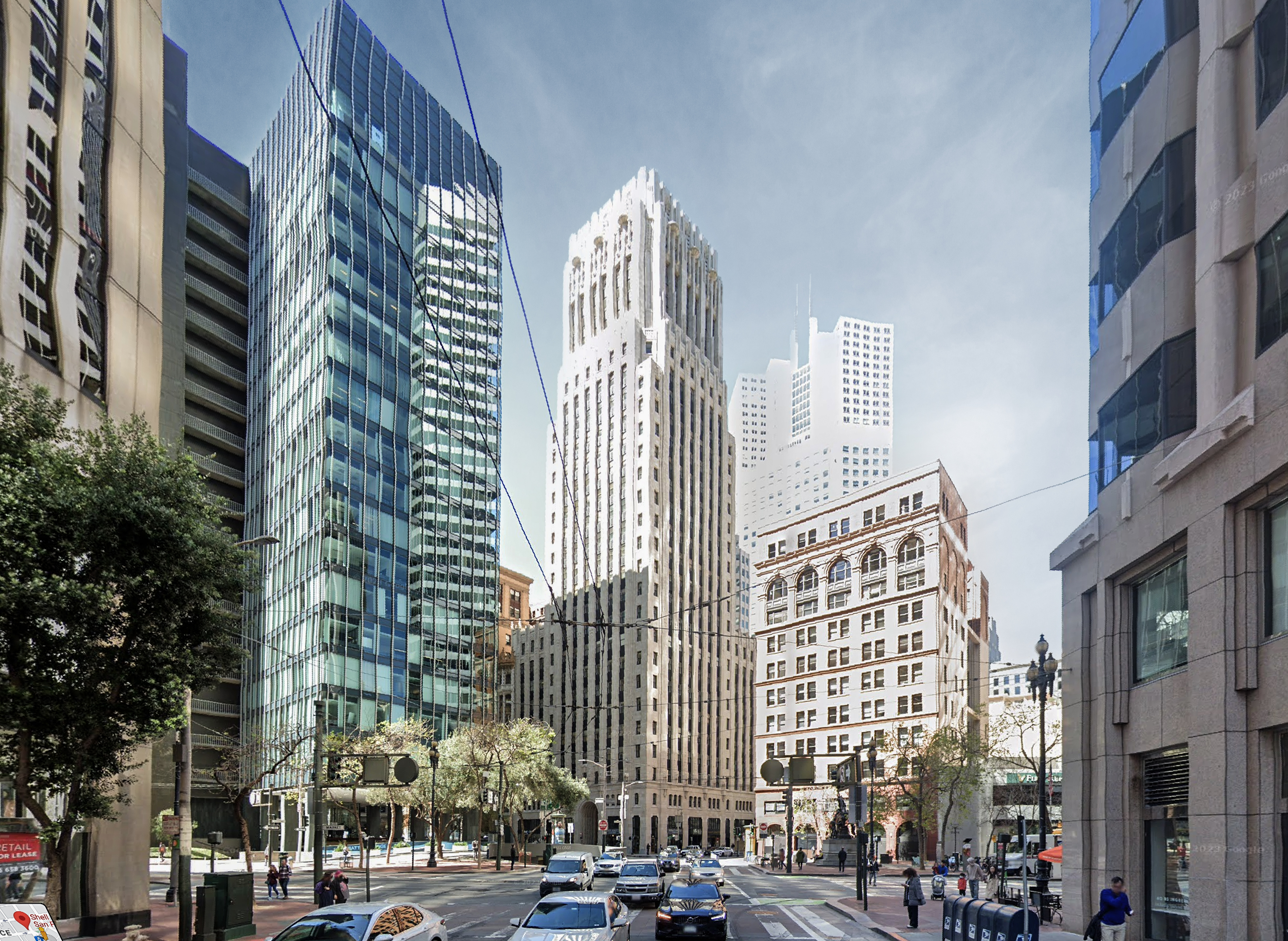The Russ Building is a Neogothic skyscraper designed by George W. Kelham, and built between 1926 and 1927 in San Francisco, CA.
Its precise street address is 235 Montgomery Street, San Francisco, CA. You can also find it on the map here.
At the time of its completion in 1927 the Russ Building incorporated solutions that were quite advanced at the time, these included the city's first covered parking lot.
The building has been restored 2 times over the years to ensure its conservation and adaptation to the pass of time. The main restoration works happened in 2012 and 2016.



